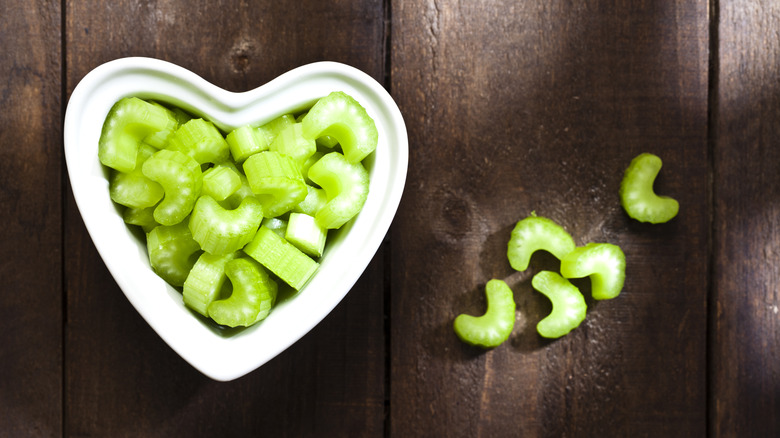Ina Garten's Tip For Avoiding Celery Strings In Tuna Salad
Classic or spruced-up tuna salad is just not tuna salad without all the delicious sweet and savory add-ins, including the chopped celery. The contrast in textures is what makes this sandwich filling favorite so delicious. But if you bite into a tuna salad sandwich and find your teeth are getting a flossing with the celery strings, then you may want to try Ina Garten's solution to this all too common problem.
Because celery is a fibrous, stalk vegetable, Garten uses celery hearts to make her tuna salad. On an episode of her Food Network show, "Barefoot Contessa," Garten said while preparing tuna salad tuna melts that these inner stalks tend to be slightly tenderer and less stringy, eliminating the chewing and swallowing hazards those outer pieces can cause.
An added bonus to using celery hearts is they are less bitter than the outer celery stalks.
Keep those hearts hydrated
Celery hearts tend to be lighter in color than those outer stalks, ranging from a pale green to an almost pale yellow. Because they are younger and less developed than the outer celery pieces, they are often easier to work with. They are great to use in soups, stir-fries, or as part of a crudité with your favorite ranch dressing or hummus. That said, you can still cook with those more fibrous and stringy outer pieces. Simply take a vegetable peeler across the thread side of the celery and peel.
When storing your celery hearts, remember they need to stay hydrated or they will lose that crispness. It is recommended that you keep them in the plastic bag they come in or wrap the stalks in damp paper towels before you place them in the crisper drawer. However, if you buy celery hearts and find them to be looking a little forlorn, don't be too quick to discard them. You can revive them by giving them a full ice bath immersion.

